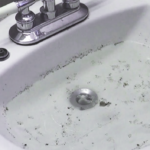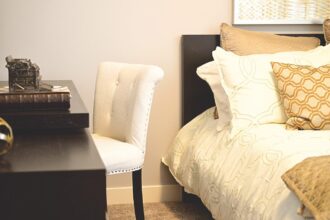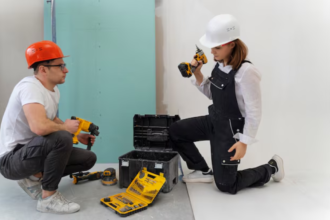The popularity of artificial grass has seen a noticeable uptick in recent years. While pristine, natural green lawns have long been the gold standard, an increasing number of home and business owners are now gravitating towards their synthetic counterpart. It’s beneficial to dissect the reasons for this shift and learn about both the benefits and considerations surrounding artificial grass.
What is Artificial Grass?
Historically, the initial iterations of artificial grass were primarily developed for sports arenas that sought an alternative to natural grass. Over time, its appeal broadened, reaching domestic gardens and public spaces.
Artificial grass is a surface made from synthetic fibres designed to echo the appearance of natural grass. It’s not just about imitating the look, but also offering a texture that is somewhat reminiscent of the real thing. The foundation of artificial grass typically consists of materials like polypropylene, nylon, or polyethylene, which are woven into a backing material and then interspersed with a mix of sand and rubber granules to provide stability.
Benefits of Artificial Grass
1) Maintenance
As the adoption of artificial grass has spread, its advantages have become more evident. Foremost among these is the significant reduction in maintenance. Unlike natural lawns, artificial grass doesn’t require regular watering, mowing, or fertilising. This can translate to tangible savings, especially in water-scarce regions or for individuals who value their time.
2) Durability
Artificial grass is designed to withstand varied weather conditions, be it relentless sun exposure, heavy rain, or even snow. This resilience ensures that it remains green and usable throughout the year, unlike natural grass that can turn brown or muddy depending on the season. With proper care, its lifespan can extend for many years, offering long-term value for the initial investment.
3) Environmentally Friendly
From an environmental standpoint, artificial grass offers certain advantages. The lack of a need for pesticides or herbicides means fewer chemicals leaching into the ground. The water conservation aspect also stands out, especially in areas where water usage is a pressing concern.
4) Aesthetics & Functionality
For locations where natural grass struggles to thrive, artificial grass presents an aesthetically pleasing alternative. Its consistent green appearance can uplift the visuals of a space that might otherwise appear barren or patchy.
5) Cost-Effectiveness
While the initial cost of artificial grass can be substantial, the long-term savings accrued from reduced water bills and the absence of regular maintenance can make it cost-effective in the grand scheme of things.
Considerations Before Installing Artificial Grass
Before diving headfirst into the world of artificial grass, there are aspects that one must consider:
Health & Safety
One of the significant concerns revolves around health and safety. On particularly hot days, ultra blade artificial grass can retain more heat than its natural counterpart. This can result in the surface becoming uncomfortably warm to walk on, potentially posing a hazard, especially to children or pets.
The potential chemical off-gassing from certain types of artificial grass has been a topic of discussion. Although most modern iterations are designed to be safe, there have been instances in the past where specific types released chemicals, raising concerns about prolonged exposure, especially in enclosed spaces.
Environmental Impact
Environmental considerations also play a pivotal role in the decision-making process. While artificial grass does present water conservation benefits and reduces the need for harmful chemicals, the production, transportation, and eventual disposal of artificial turf come with their own set of environmental impacts. For instance, the manufacturing process requires significant energy and resources, and at the end of its life cycle, artificial grass doesn’t biodegrade, raising issues related to landfill waste.
Aesthetics & Feel
Aesthetically, while artificial grass has made leaps and bounds in replicating the look and feel of natural grass, there remains a tangible difference. Some individuals find the texture and appearance of synthetic options less appealing than the real thing. Also, the market offers various colour and style choices, and not all of them may be to everyone’s taste.
Installation Process
Laying down artificial grass isn’t as simple as it might seem. Proper groundwork is essential, with emphasis on ensuring appropriate drainage. While some might be tempted to make it a DIY project, professional installation can make a difference in the lifespan and appearance of the turf.
Best Practices for Artificial Grass Care
Assuming one opts for artificial grass, its maintenance, although minimal compared to natural grass, is still crucial. Regular cleaning, especially after adverse weather conditions, will keep the turf looking fresh. Debris like leaves and twigs should be removed promptly to prevent any damage or mould growth.
Ensuring the artificial grass remains wrinkle-free is also vital. Over time, heavy objects or constant pressure in certain areas can lead to depressions or seams in the turf. Regular checks and adjustments can prevent these from becoming permanent.
And even though artificial grass doesn’t need watering like a natural lawn, occasional rinsing helps in removing dust and other fine particles, ensuring the turf retains its fresh appearance.
Is Artificial Grass Right for You?
While artificial grass offers a plethora of benefits, it’s essential to approach the decision with a holistic view. Considering both its advantages and potential drawbacks will ensure that the choice made serves its purpose and aligns with individual preferences and needs.












